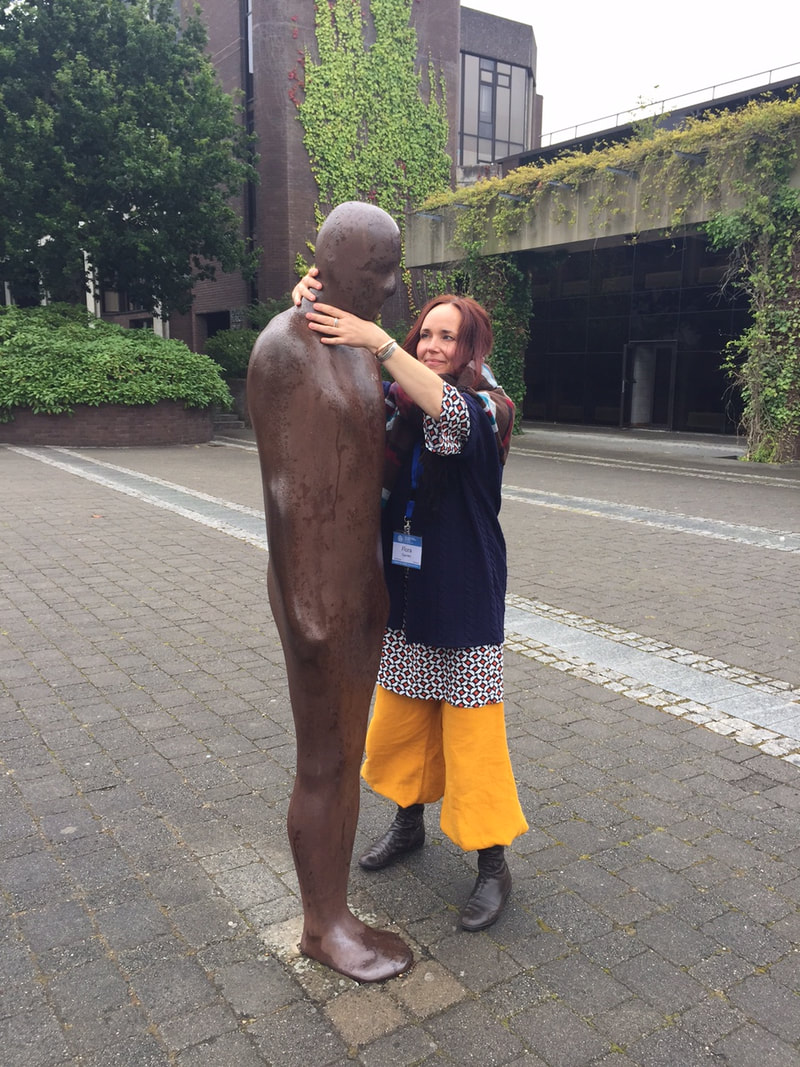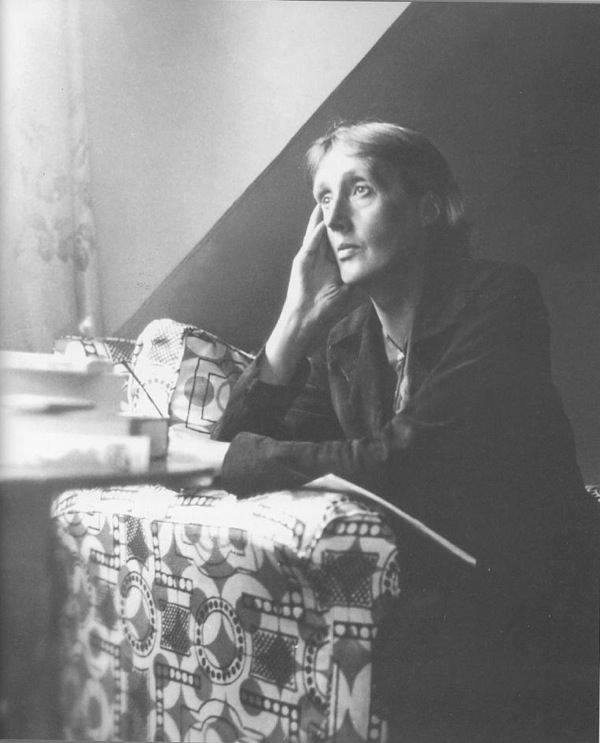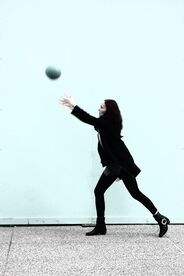Do you have unexplained dry, irritated eyes? Blurred vision? Neck and back pain, headaches?
A recent article in the Huffington Post made me realize how society never talks about slouching posture as a cultural act of defiance beyond the teenage years. But grown-up artist Sarah Lucas does just that, and I like the artistic expression of it. If we don't talk about the devastating health effects of habitual slouching but look at it as an artistic standpoint, we get an interesting new perspective: ".....Defiant slumping dates back at least to 1913 with the “debutante slouch,” a self-conscious craze (documented around the time by the Library of Congress and The New York Times) used to describe women of all classes who walked with their “shoulders sloping, chest dropped, hips slung forward and the knees... slightly bent.” For many, the posture went hand in hand with women drinking, smoking and casting corsets aside; it was something to be medically advised against. For others, it was a signifier of imperfect change, of (mostly white) women finally harnessing defiance, vying for jobs in male-dominated fields and protesting for the right to vote, slouch-shaming be damned. In recent years, celebrities like Kristen Stewart, Emma Watson and Keira Knightley have inspired tsk-tsking tabloid headlines for their refusal to assume classic starlet stances on carpets. And in case you needed any additional evidence that slouching is a good thing, Jordan Peterson advises against it. As someone who has the posture of Eeyore holding a smartphone, Lucas’ devotion to slouch life hits me where it aches (in my lower spine). I have only felt shame in relation to my posture, perceiving it as a sign of my indefatigable fatigue and inability to function in even the most basic of ways. I’d never considered that a slouch could be something to be proud of, a way of wordlessly communicating some form of BDE...." If the above mentioned actresses assumed the slouch habitually or made a conscious choice to make a cultural statement is still unclear. by Daniel Norton Luna
"The first time I entered the Walk-In-Balance Center for the Alexander Technique, I came to an "Effortless Posture 101" workshop - to learn some basics to help with my poor posture. I walked away from this introduction to the Alexander Technique inspired to bring reason to my use of the body, to make sense of all my unconscious habits. I signed up for lessons and the process of personal enlightening through my body has since continued. Reflecting on the lessons from this past year, countless micro-experiences, realizations, and life decisions come to my mind to describe the deep development brought to my life. Yet, detailing those events, ideas, and changes would make little sense without first recognizing how I learned to practice the Technique. Even so, it would be impossible to describe my growth as an Alexander Student without first and foremost recognizing my Alexander Teacher, Flora D.H. Ojanen, whose skillful openness and compassion shaped the honesty and effectiveness of our work together. Learning to practice the Alexander Technique with Flora has taught me the skills to pause, release and body reasoning, and with the appropriate use of these skills, I find I am on the path to being true to myself and my nature. ....Pause. The pause is a fundamental skill an Alexander student must nurture. It is a relatively simple concept: just stop, pause! Yet, in this skill lies the key to interfering with habit cycles. At the beginning of lessons, Flora would usually ask how I have been. Many times she would come over to me, in the middle of my response, and acknowledge an area of my body that is doing something unnecessary. My neck might be jutting forward, making me push my head back to stay level, and this stress may start in the positioning of my hips, which I am unconsciously pushing forward, or perhaps even my feet, where I am distributing the weight of my body onto my heels - either way! I need to pause. Flora allows me to take a moment to witness the imbalance within myself, to stop what I am doing (responding to her question) to see what I am actually doing (losing my balance). While the pause brings awareness to habits and tension in one's body, the next invaluable skill, release, eases one into letting go of them. After Flora has me notice the tension I am putting my body through, we work together in letting go of this tension. Especially when first starting to practice the Alexander Technique, easing the muscles I thought were essential to holding me together was a scary and disorienting experience. It was a venturing into the unknown. Flora's calm voice would reassure me, "You're not going to fall if you let go of your hips; I am standing right here, I'll catch you." Learning to release is an exercise in trust. Through this trust and Flora's honest hands, I was able to experience the ease of balance and uprightness as I had never known it before, In this space, there is stillness, grace and peace. Who knew there could be so much joy in standing? After experiencing the spaciousness of one's body can indeed provide, the question arises: how can I maintain this? The final skill, body reasoning, seeks to answer that question, as it encourages the Alexander student to consider their use of the body as they work through every situation Life throws at them. In my early lessons with Flora, I fell in love with the feeling of balance and finding the natural space in my body. Since then, she has shared with me the skill of learning to move in ways that prioritize balance. The exercises were always quite fun and entertaining - I am particularly fond of the time I had to balance a peacock feather on the tip of my finger. At first, I was trying to make the feather stay up through sheer reaction to its movements, which send it even more out of control. From her sage wisdom of feather-balancing, Flora told me: "Let the feather be your leader, follow the feather." On my next try, I heeded to her advice. I allowed myself to stay open with balance and follow the feather's movement through space: I experienced following balance itself. With time and practice, I have been able to bring these skills to other areas of my life with the simple, but most rewarding effect: being true to myself and my nature. Throughout our work, Flora would identify (and make me aware of) this process as it was unfolding because I am, before all other labels, simply embedded within this body. The feelings I experience in this body are my own and through keen introspection, I can become aware of the root of these sensations. Furthermore, this awareness creates the opportunity to let go of whatever I am gripping in the moment, to rediscover space where I have kept it hidden. Finally, this work and these lessons have given me tools and opened me to the process of reincorporating this natural spaciousness of being into my life, in every moment I can bear to face in humble honesty."  Early Development of Language by Hand: Composing, Reading, Listening, and Speaking Connections in Children. A 2006 study from the Department of Educational Psychology, University of Washington (Seattle) showed that Printing, Cursive Writing, and Typing on a keyboard are all associated with distinct and separate brain patterns - and each results in a distinct end result. When children composed text by hand, they not only consistently produced more words more quickly than they did on a keyboard, but expressed more ideas.... See the full study here. It is said that Virginia Woolf wrote while standing at a desk 3'6" tall because she wanted to be like a painter who could instantly step away from her canvas to get a better view...
She was onto something. Coming up and out of the mental thicket for air, with wide eyes and ears to inhale space and sound, refreshing the senses to allow the emergence of the grander picture... Beautiful and relatable. Protagonist for the standing desk. "Integrity takes long thoughtful walks. When she comes home, her pockets are full of stones and shells and feathers. She is the daughter of a weaver, and she has inherited her mother's sense of texture and color, though she prefers the potter's wheel to the loom. She makes ritual vessels for the local temple. It was through working with clay that Integrity grew to understand that the body is also a vessel, beautiful, sturdy, empty, and sacred.
Integrity loves the intersection where sculpture becomes dance. She has a supple spine and loves muscles. She knows sign language and has often worked as an interpreter. When she speaks with her hands, it is not in grand, dramatic gestures but in soft, subtle movements. Watching her hands dance, we hear stories that we have no words for." J.Ruth Gendler |
Walk In Balance Center BlogHow To Thrive Being Human In Our Modern World.
Meet Daily Stressors and Life's Challenges with a Spacious Body & Conscious Mind. Archives
January 2020
Categories
All
|
Berlin
|
Tai Chi / Qi Gong BerlinAlexander TechniqueNow In BErlinStudy onlineContactREVIEWS |
© Copyright Walk In Balance Alexander Technique Center I 2024 All Rights Reserved.








